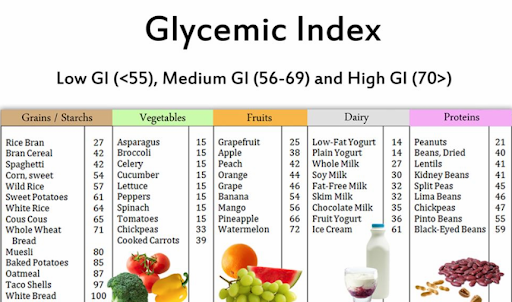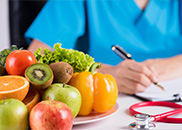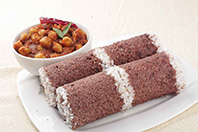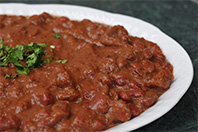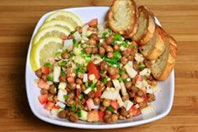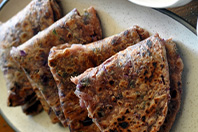
Plan your shopping 10 days prior to the month starts & make a goal of including that power food in your daily portions.
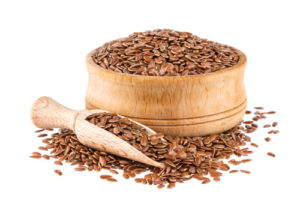 1. Flax Seeds
1. Flax Seeds
Regular consumption of flax seeds helps in lowering the risk of diabetes. They are rich in magnesium, fiber, and Omega-3 fatty acids.
Nuts and seeds are known for their healthy fats but flax seeds are particularly effective in diabetes control because of their low GI scores. For better health and better blood sugar management, include a spoon of flax seeds in your everyday diet.
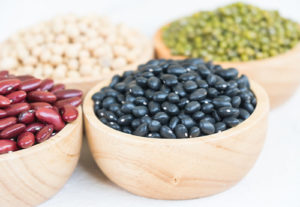 2. Beans
2. Beans
It is a well-known fact that beans are among the most nutritious foods. Rich in fiber and proteins, not only are they a great option for vegetarians but also for diabetics.
With beans, one can create a variety of diabetic diet foods. Packed with magnesium, potassium and a GI score of less than 30, beans are great for people with type 2 diabetes. They can also reduce the risk of coronary heart disease.
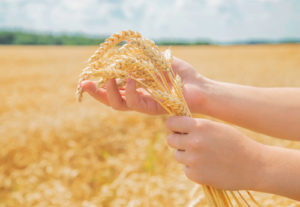 3. Barley
3. Barley
The next weapon to control diabetes is Barley. Barley is an ancient grain loaded with soluble fibres. These fibres form a gel when they mix with the liquids in your stomach.
The presence of this gel slows down the emptying of the stomach, which prevents carbohydrates from being absorbed too quickly and raising blood glucose levels. Coming to the glycemic index, barley scores 25 GI which makes it one of the best foods for diabetics.
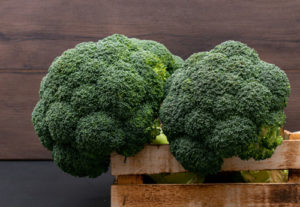 4. Broccoli
4. Broccoli
Non-starchy vegetables, like Broccoli, have fewer carbs and are therefore recommended to people trying to control their blood sugar levels.
Broccoli is low in carbs, calories and GI and can be enjoyed in abundance by diabetics. It satisfies your hunger and keeps you full for a longer duration. They are also known to reverse type 2 diabetes.
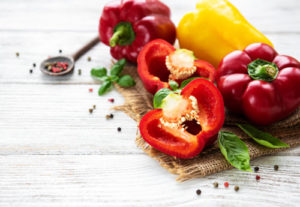 5. Red Pepper
5. Red Pepper
When green peppers can remain on the vine longer, they turn into red peppers. All that sitting and waiting to be picked loads them with nutrients.
They’re powerful antioxidants. They have beta carotene and Vitamin A and C. Red colored fruits and vegetables contain higher amounts of lycopene than vegetables of other colors. Spinach and carrots will also give you these benefits.
A serving is a whole cup raw, and a half a cup of cooked red peppers. Try them in all your dishes to give a rich, red color and loads of flavor.
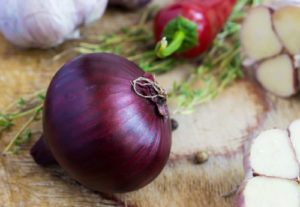 6. Purple Onions
6. Purple Onions
Purple onions are powerful antioxidants that provide great flavor to your dishes. They’re also loaded with fiber, folate and potassium that are good for cardiovascular health.
High in flavonoids, purple onions are also preventative for cancer and other chronic illnesses. Eat a serving of a half a cup of raw purple onions in your salads, or one-half cup of cooked purple onions for your health.
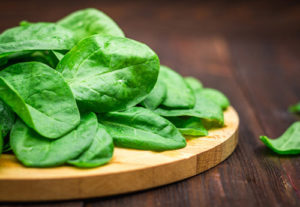 7. Kale And Spinach
7. Kale And Spinach
Some greens, such as iceberg lettuce, don’t have near the nutrients and healthy properties of kale or spinach. These are highly nutritious greens, and popular super foods.
Servings are free on the ADA list, and measure about one-half cup of cooked or 1 cup of raw vegetables. You’ll get a low GI food with only four grams of carbohydrates and only about 18 calories per serving.
Nutrients are packed in there with about every vitamin you can think of. Steaming, stewing, sautéing, microwaving, stir-frying or using your greens in your salad give a variety of ways to enjoy these fresh vegetables.
Kale and spinach reduce the risk of T2D by up to 14 percent. With the pigments lutein and zeaxanthin that are good for your eyes, and tend to counter-balance the effects of smoking, pollution and infections on our bodies, and protect from cataracts.
When you buy greens, look for smaller bunches for tenderness. Wash your greens and dry them. Cut the spine of the stem out of each piece so that you are not cooking and eating the tough stems, but rather the tender leaves.
It’s in there – your Vitamin A, K, glucosinolates, potassium for your blood pressure management, folate and Vitamin C. You’ll get your beta carotene for an antioxidant to protect against cancers. Enjoy greens with just 22 calories per serving and four grams of free carbohydrates.
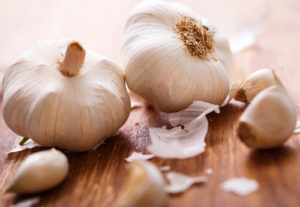 8. Garlic
8. Garlic
Garlic has been around for hundreds, even thousands of years. It’s used in folklore medicine and for cooling. Garlic influences on cholesterol by lowering it, thus preventing heart disease, problems with blood pressure and cancer.
Though research is contradictive as to the true benefits of garlic, it does seem to lower blood cholesterol, slow the development of plaques in the arteries (atherosclerosis), thus lowering heart attack and stroke risk.
If you have high blood pressure, research indicates that consuming garlic may lower it some. At just one gram of carbohydrates per garlic clove, if you let it rest after chopping or mashing it, it can increase the cancer fighting properties of garlic.
Use garlic in many ways. You can use it to enhance the flavor of whole grain breads, pastas, meat dishes of all kinds and sauces. It’s a very versatile super food.
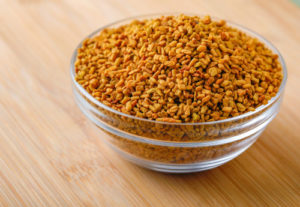 9. Fenugreek Seeds
9. Fenugreek Seeds
Fenugreek seeds, a source of soluble fiber, contain “Galactomannan” , an essential constituent that helps lower the rate of digestion and absorption of carbohydrates. This in turn helps lower the blood glucose levels in people with diabetes and improves overall glucose tolerance. Besides this, fenugreek seeds also an unusual amino acid (4-hydroxyisleucine), having anti-diabetic properties such as enhancing insulin secretion under hyperglycemic conditions, and increasing insulin sensitivity, thus helping in the treatment of type 1 and type 2 diabetes mellitus.
BEST WAYS OF CONSUMING FENUGREEK
Dry roast fenugreek seeds on medium-high heat for one to two minutes, Stir frequently and add 1 teaspoon over Indian curries , salads and stir-fry dishes.
Soak 1 teaspoon overnight in water and gulp the next morning with 1 glass water
Sprout fenugreek seeds by soaking them in water overnight , keeping them in a jar covered with a cloth for few days until tiny green shoots appear. The sprouted fenugreek seeds can be added to any kind of salads.
Fresh fenugreek leaves can be added to roti’s , parathas , dosas and idlis.
Herbal teas made with fenugreek seeds, lemon and honey is an effective remedy used to treat fevers.
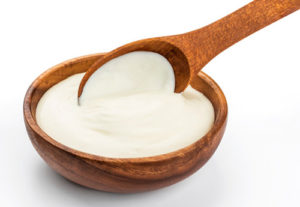 10. Yogurt And Milk
10. Yogurt And Milk
Our final super food for people with diabetes is yogurt and milk. Milk products contain Vitamin D that’s important for your teeth, bones and overall health. Skim milk and non-fat yogurt are low on the GI scale, so they’re a good choice if you have diabetes.
Non-fat yogurt can serve as a substitute for a dessert or be used to make smoothies. Both yogurt and milk products are also an excellent source for your daily needed calcium. Your body’s vessels and muscles need calcium to function properly, as do your bones and teeth.
There’s riboflavin, or Vitamin B2, in there and protein. The best yogurt to get has active yogurt cultures to aid in digestion. It will load your gut up with healthy probiotics that help your gastrointestinal tract function properly. They’ve even been known to help with overall functioning of your immune system.
Greek yogurt has also gained in popularity and is readily available on grocery shelves. It’s lighter and fluffier than regular yogurt. You still want to look for varieties with low fat content and no added sugars. Always take a look at your food labels to get your total carbohydrate content, as it varies so much with different kinds and flavours of yogurts.
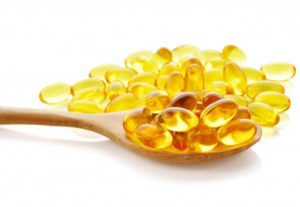 11. Fish High In Omega-3 Fatty Acids
11. Fish High In Omega-3 Fatty Acids
Omega-3 fats may help to reduce the risk of heart disease and inflammation. Fish high in these healthy fats are sometimes referred to as “fatty fish.” Salmon is well known in this group. Other fish high in omega-3 are herring, sardines, mackerel, trout, and albacore tuna. Choose fish that is broiled, baked or grilled to avoid the carbohydrateand extra calories that would be in fish that is breaded and fried. The American Diabetes Association Standards of Medical Care in Diabetes 2017 recommends eating fish (mainly fatty fish) twice per week for people with diabetes.
